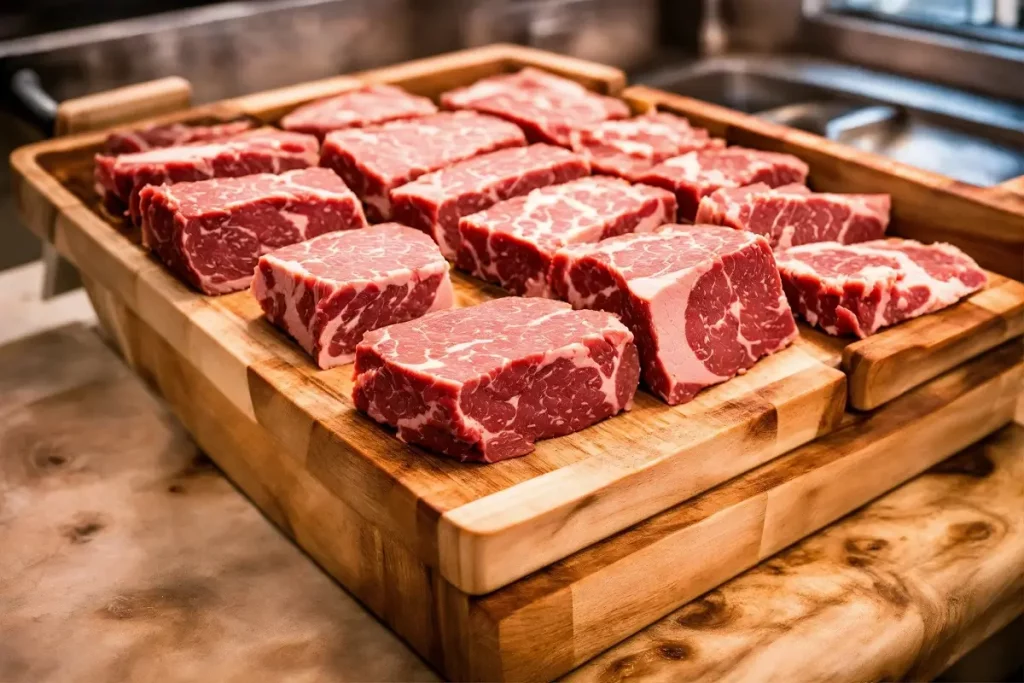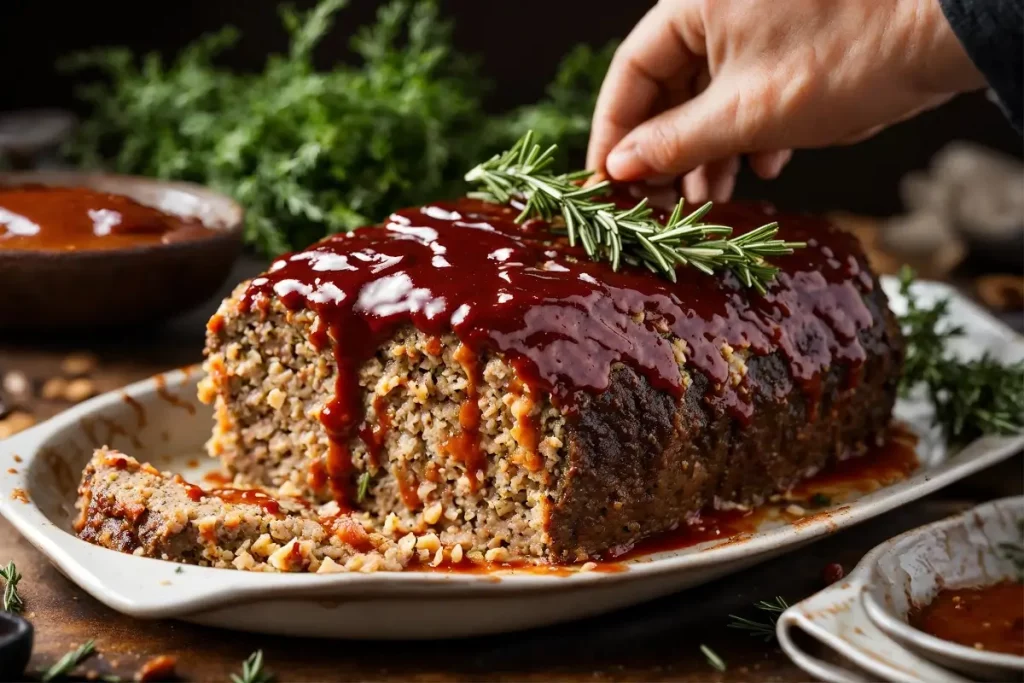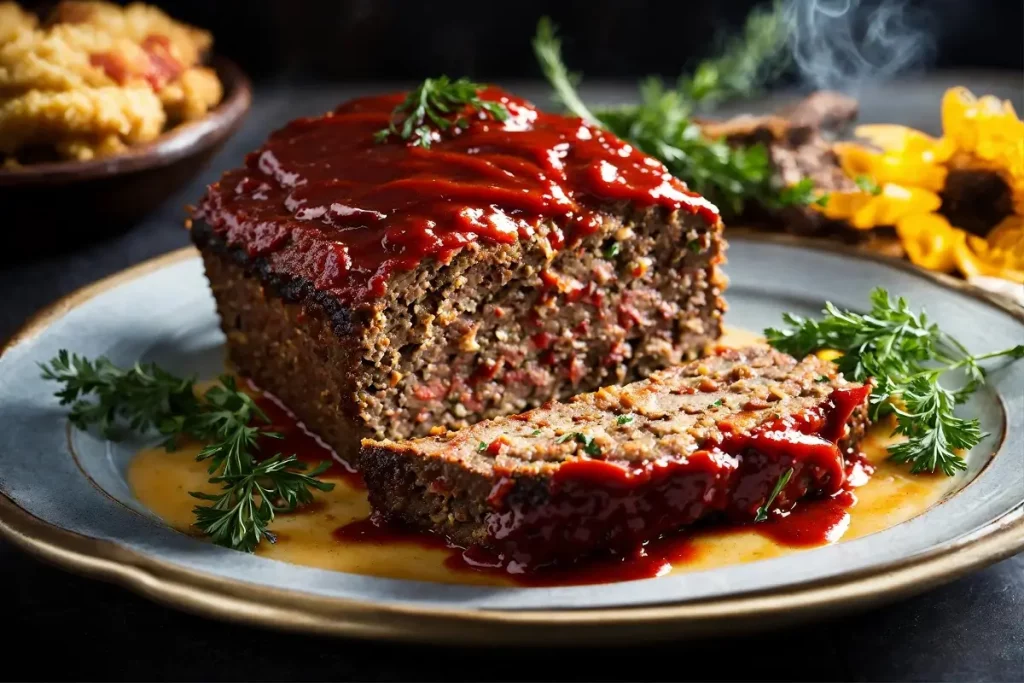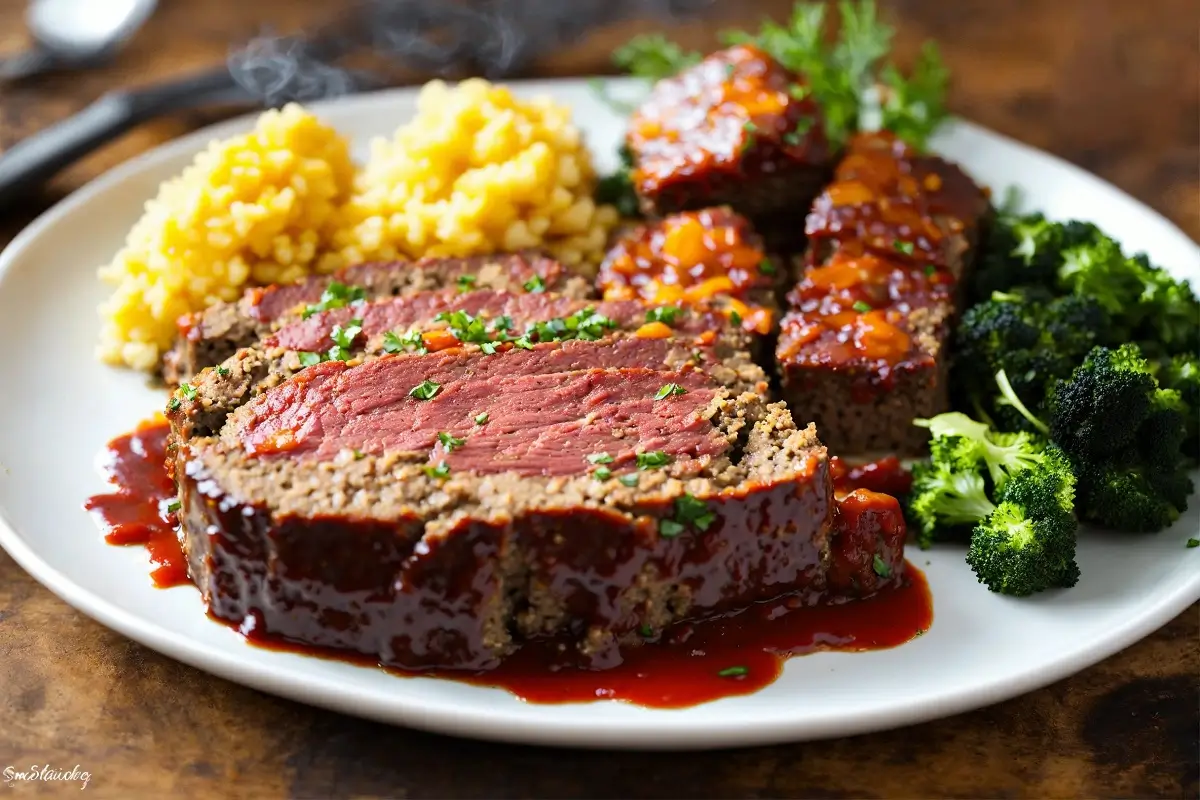Introduction to Smoked Meatloaf
The Evolution of Smoked Meatloaf: A Flavorful History
Meatloaf, a classic comfort food, has undergone a remarkable transformation, evolving into a smoked delicacy that tantalizes the taste buds. This transformation has not only redefined the traditional meatloaf but also introduced a new realm of flavors to this beloved dish. The art of smoking meatloaf brings a unique twist, infusing it with rich, smoky flavors that elevate it from a simple family meal to a gourmet experience. For those interested in classic recipes, you might enjoy exploring a classic twist with the Lipton Meatloaf Recipe.
Overview of Smoked Meatloaf Recipes
Smoked meatloaf recipes vary widely, offering a plethora of options for customization. From the choice of meats and seasonings to the type of wood used for smoking, each element plays a crucial role in defining the final taste and texture of the dish. Whether you’re a fan of classic flavors or enjoy experimenting with bold and innovative combinations, there’s a smoked meatloaf recipe that’s sure to tantalize your taste buds.
Selecting Ingredients for Smoked Meatloaf
Beef, Pork, and Mixed Meats: The Foundation of Smoked Meatloaf
The choice of meat is fundamental in smoked meatloaf recipes. Beef, known for its rich flavor and firm texture, is a popular choice. Pork, on the other hand, adds a tender and juicy element to the dish. Many recipes combine these meats, leveraging the strengths of each to create a balanced and satisfying loaf. The proportion of beef to pork can significantly impact both the texture and taste of the meatloaf, allowing for a range of possibilities.
Impact on Texture and Taste in Smoked Meatloaf
The texture and taste of smoked meatloaf are heavily influenced by the choice of meat. Beef lends a robust and hearty flavor, while pork introduces a softer, more delicate texture. Mixing meats can result in a harmonious blend, offering a perfect balance of flavor and tenderness. It’s essential to consider the fat content as well, as it contributes to the juiciness and overall mouthfeel of the meatloaf.
Mastering the Art of Seasoning in Smoked Meatloaf
Crafting Flavorful Blends and Spices for Smoked Meatloaf
Seasoning is where smoked meatloaf recipes truly shine. A well-crafted blend of spices can elevate the dish, adding depth and complexity to the flavor profile. Common seasonings include salt, pepper, garlic powder, and onion powder, but the possibilities are endless. Herbs like thyme, rosemary, and sage can add a fresh, aromatic touch, while spices like paprika and cumin introduce warmth and a hint of smokiness.
Customizing Seasonings for Different Meats in Smoked Meatloaf
Customizing the seasoning blend based on the type of meat used can enhance the overall flavor of the meatloaf. For instance, beef pairs well with bold and robust spices, while pork benefits from sweeter,
more subtle flavors. Experimenting with different combinations of herbs and spices can lead to delightful discoveries and a smoked meatloaf that’s uniquely yours.
Preparation Techniques for Smoked Meatloaf
Mixing and Shaping Methods for Smoked Meatloaf
The preparation of smoked meatloaf begins with the careful mixing of ingredients. It’s crucial to combine the meats, seasonings, binders, and fillers gently to avoid overworking the mixture, which can result in a dense and tough loaf. Once mixed, shaping the meatloaf is an art in itself. Whether formed by hand or using a loaf pan as a mold, the goal is to achieve a consistent shape that will cook evenly in the smoker.
Tips for Maintaining Moisture in Smoked Meatloaf
One of the challenges in preparing smoked meatloaf is ensuring it remains moist and juicy. Incorporating ingredients like eggs, breadcrumbs, or soaked bread can help retain moisture. Additionally, basting the meatloaf with a glaze or sauce during the smoking process can add flavor and moisture, preventing the meat from drying out.

Selecting the Best Smoker
Types of Smokers Suitable for Meatloaf
Choosing the right smoker is essential for achieving the perfect smoked meatloaf. From traditional offset smokers to modern pellet grills, each type offers unique advantages. Offset smokers provide a classic smoking experience, while pellet grills offer ease of use and precise temperature control. Electric and gas smokers are also popular choices, especially for those seeking convenience.
Pros and Cons of Each Type
Each type of smoker has its pros and cons. Offset smokers, for example, are ideal for those who enjoy the hands-on experience of managing fire and smoke, but they require more attention and skill. While easier to use, pellet grills might not offer the same depth of smoky flavor as traditional wood smokers. It’s important to consider factors like ease of use, temperature control, and the desired level of smokiness when selecting a smoker for your meatloaf.
Smoking Process and Temperature Control
Ideal Temperatures and Timings
The smoking process is where the magic happens. Smoking meatloaf typically requires a low and slow approach, with temperatures ranging from 225°F to 250°F. The cooking time can vary based on the size and thickness of the meatloaf, but it generally takes several hours. Maintaining a consistent temperature is key to ensuring the meatloaf cooks evenly and develops a perfect smoky flavor.
Managing Smoke for Flavor Enhancement
The type of wood used for smoking can significantly impact the flavor of the meatloaf. Woods like hickory, mesquite, and oak impart a strong smoky taste, while fruitwoods like apple and cherry offer a sweeter, milder flavor. Experimenting with different woods can lead to exciting flavor profiles, making each smoked meatloaf a unique culinary experience.

Glazes and Toppings
Creative Glazes and Toppings for Smoked Meatloaf
Glazes and sauces add a finishing touch to smoked meatloaf, enhancing both its flavor and appearance. A sweet and tangy barbecue sauce can create a caramelized crust, while a savory glaze can
deepen the meat’s richness. The choice of glaze or sauce can be tailored to complement the meatloaf’s seasoning and the type of wood used for smoking, creating a harmonious and delicious final product.
Application Methods for Best Results
Applying the glaze or sauce at the right time is crucial. Typically, it’s brushed on during the last 30 minutes to an hour of smoking. This timing allows the glaze to caramelize without burning, adding a delectable layer of flavor. Some recipes call for multiple applications, layering the glaze for a more pronounced taste and a beautifully glossy finish.
Sides and Pairings
Recommended Side Dishes
The perfect side dishes can elevate your smoked meatloaf meal. Classic options like mashed potatoes, green beans, or a crisp salad complement the rich flavors of the meatloaf. For a heartier meal, consider roasted vegetables or a creamy mac and cheese. Additionally, for those looking for something different, you might be interested in quick and healthy recipes like Air Fryer Salmon Bites, offering a delightful contrast to the rich flavors of smoked meatloaf.
Wine and Beverage Pairings
Selecting the right beverage to accompany smoked meatloaf can elevate the dining experience. A robust red wine, such as a Cabernet Sauvignon or a Shiraz, pairs well with the meat’s smoky and savory flavors. For beer lovers, a dark stout or a smoky porter can be a delightful match. Non-alcoholic options like iced tea or a smoky-flavored lemonade can also complement the dish beautifully.
Family-Friendly Smoked Meatloaf Recipes
Kid-Approved Recipes and Adaptations
Smoked meatloaf can be a hit with the whole family, including the kids. Creating a kid-friendly version might involve using milder seasonings and incorporating familiar flavors like ketchup or mild barbecue sauce. Mini meatloaves or meatloaf cupcakes can be fun and appealing options for younger diners.
Making Smoked Meatloaf a Family Favorite
Involving family members in the preparation process can turn cooking smoked meatloaf into a fun and educational activity. Kids can help mix ingredients or shape the loaf, making them more excited to try the finished dish. Serving the meatloaf with favorite sides or creating a build-your-own sandwich station can also make the meal more engaging and enjoyable for all ages.
Healthy and Diet-Friendly Options
Low-Carb and Gluten-Free Variations
For those following specific dietary guidelines, smoked meatloaf can still be on the menu. Low-carb versions can be made by substituting breadcrumbs with almond flour or crushed pork rinds. Gluten-free options are easily achievable by using gluten-free binders and ensuring all other gluten-free ingredients.
Incorporating Vegetables for Nutrition
Adding vegetables to smoked meatloaf not only boosts its nutritional value but also enhances moisture and flavor. Finely chopped vegetables like bell peppers, onions, and zucchini can be mixed into the meatloaf, making it a more wholesome and flavorful dish.

Advanced Techniques for the Best Smoked Meatloaf
Tips from Professional Chefs
Gleaning tips from professional chefs can take your smoked meatloaf to the next level. Techniques like using a blend of different meats, experimenting with exotic spices, or incorporating unique fillers like sun-dried tomatoes or olives can add a gourmet touch to the dish.
Creative Twists and Innovative Ideas
Don’t be afraid to get creative with your smoked meatloaf. Trying unconventional flavors, like a spicy chipotle glaze or a Mediterranean-inspired herb blend, can result in exciting new variations. Incorporating elements from different cuisines can transform a traditional meatloaf into an innovative culinary creation.
Pitfalls in Preparation and Smoking
One common mistake is overmixing the meat, which can result in a tough, dense loaf. Additionally, not monitoring the smoker’s temperature closely can lead to uneven cooking. Always use a meat thermometer to ensure the meatloaf is cooked to the safe internal temperature.
How to Troubleshoot Common Issues
If the meatloaf is drying out, consider adding a pan of water to the smoker to maintain humidity. If the outside is cooking too fast, lower the smoker’s temperature and move the meatloaf to a cooler spot. Remember, smoking is a slow and low cooking process.
Storing and Reheating Smoked Meatloaf
Best Practices for Freshness and Taste
To store leftover smoked meatloaf, wrap it tightly in foil or plastic wrap and refrigerate. It will keep for up to 4 days. For longer storage, slice the meatloaf and freeze it in airtight containers or freezer bags.
Ideas for Leftovers
Leftover smoked meatloaf is incredibly versatile. Enjoy it in sandwiches, crumble it into pasta sauces, or dice it for a hearty meatloaf salad. The smoky flavor adds a unique twist to these dishes, making leftovers something to look forward to.
Community Favorites: Top Smoked Meatloaf Recipes
Popular Recipes from Online Communities
Online communities are treasure troves of smoked meatloaf recipes, each with its unique twist. From spicy to sweet, there’s a recipe to suit every taste. These community favorites often come with personal tips and tricks, making them a great resource for both beginners and seasoned smokers.
Variations and Personal Touches
Don’t hesitate to add your personal touch to these recipes. Adjust the spices, try different types of meat, or experiment with the smoking wood. Personalizing the recipe makes the dish uniquely yours and can lead to your signature smoked meatloaf.
Conclusion and Final Tips
Summarizing Key Takeaways
Smoked meatloaf is a versatile and flavorful dish that
can be adapted to suit various tastes and dietary needs. From selecting the right meat and seasonings to mastering the smoking process, each step contributes to creating a mouth-watering smoked meatloaf. Remember, the key to a great meatloaf lies in balancing flavors, maintaining moisture, and smoking at the right temperature.
Encouragement to Experiment and Enjoy
Don’t be afraid to experiment with different ingredients and techniques. Smoking meatloaf is as much about the process as it is about the result. Enjoy the journey of creating your smoked masterpiece and share it with family and friends. After all, the best-smoked meatloaf is one that’s made with passion and enjoyed in good company.
FAQs on Smoked Meatloaf
What is the Best Wood to Smoke a Meatloaf?
The choice of wood can significantly influence the flavor of your smoked meatloaf. For a robust, hearty flavor, hickory and mesquite are excellent choices. They impart a strong smoky taste that complements the richness of the meat. If you prefer a milder, sweeter flavor, fruit woods like apple or cherry are ideal. They provide a subtle sweetness that enhances the meatloaf without overpowering it. Ultimately, the best wood is one that aligns with your flavor preferences.
What is the Secret to Moist Meatloaf?
The secret to a moist meatloaf lies in the ingredients and the cooking method. Adding moisture-retaining ingredients like breadcrumbs or oatmeal soaked in milk can help keep the meatloaf moist. Vegetables like grated zucchini or carrots also contribute moisture. Additionally, avoid overcooking the meatloaf, as this can dry it out. Smoking the meatloaf at a consistent, moderate temperature ensures it cooks evenly without losing its juiciness.
What Ingredient Keeps Meatloaf from Falling Apart?
Binders are key to keeping meatloaf from falling apart. Common binders include breadcrumbs, oatmeal, or cracker crumbs mixed with a liquid like milk or broth. Eggs are also crucial as they help to bind the ingredients together when cooked. The right balance of meat, binders, and eggs is essential for a meatloaf that holds its shape while remaining tender and moist.
Why Put Ketchup in Meatloaf?
Ketchup is a popular ingredient in meatloaf for several reasons. It adds moisture, which helps to keep the meatloaf tender. Ketchup also provides a balance of sweetness and acidity, enhancing the overall flavor profile of the dish. Additionally, it contributes to the glaze on the meatloaf, giving it a shiny, appetizing appearance and a deliciously tangy crust when baked or smoked.
- USDA Guidelines for Cooking Meat – USDA Cooking Standards
- History of Meatloaf – Historical Background of Meatloaf
- Benefits of Smoking Food – Health Benefits of Smoked Foods

